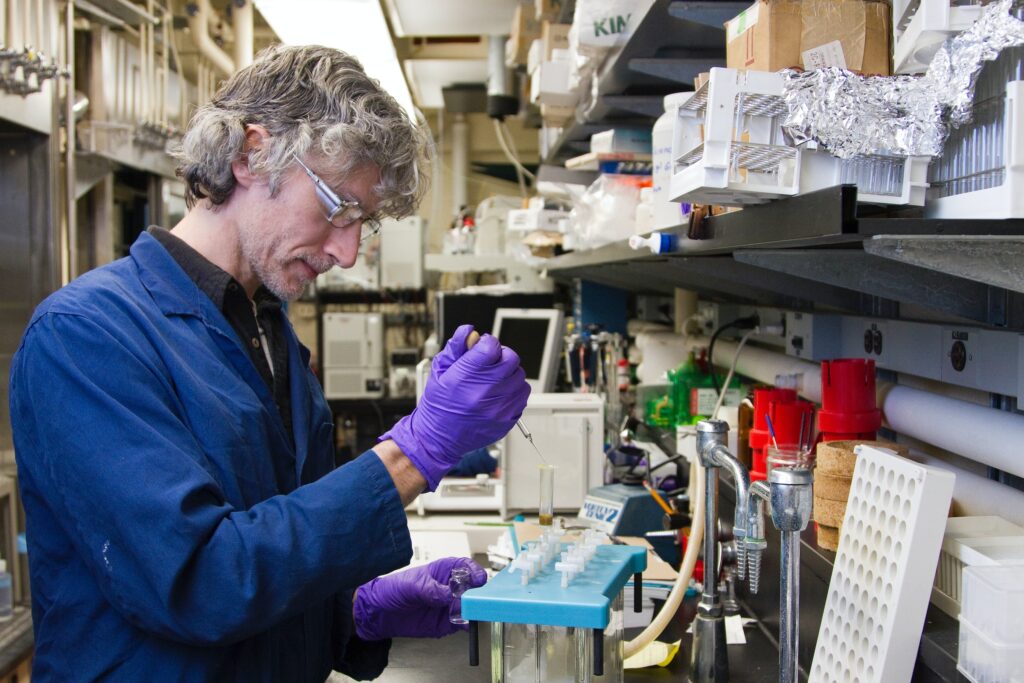
Hold onto your hats, folks, because the world is changing quicker than you can say “brain-reading robots!” Indeed, technology is evolving at an incredible rate; and we aren’t just talking about making fuel from thin air (which, by the way, is pretty cool).
We’ll explore 12 cutting-edge technologies that are shaking things up and have the potential to revolutionize the world as we know it.
1. Brain-Reading Robots
First on our list is Artificial intelligence (AI) technology which has made significant advancements in recent years, including the development of brain-reading robots. These robots can interpret human brain signals and translate them into actions.
The applications for this technology are vast, including assisting people with disabilities, controlling prosthetic limbs, and aiding in rehabilitation after injury or stroke.
A prime example of this technological advancement is the brain-computer interface developed by the University of Houston. This interface enables paralyzed individuals to control a robotic arm using their thoughts.
2. Smart Cities
Smart cities involve utilizing technology to enhance the sustainability and efficiency of urban living. The implementation of sensors to monitor air quality and traffic, smart grids to manage energy usage, and interconnected devices to enhance public services all work together in this concept.
A great example of this technology is Barcelona’s smart waste management system that utilizes sensors to identify full trash bins and subsequently alerts garbage trucks to empty them.
3. Xenotransplantation
Xenotransplantation involves the transplantation of organs or tissues from one species to another. Although still in its early stages, this field of research shows promise in addressing the shortage of human organs available for transplantation.
At the University of Maryland School of Medicine in Baltimore, MD, USA, a historic breakthrough was achieved as a 57-year-old man with end-stage heart disease successfully underwent a heart transplant surgery, receiving a genetically modified pig heart.
This event marked the first-ever instance of a porcine-to-human heart transplantation in the world, representing a significant advancement in the field of xenotransplantation.
4. Sand Batteries
Also on the list are sand batteries that use a natural resource to harness energy.
Sand batteries are a form of energy storage technology that employs silicon as the anode material, which is abundantly found in sand. Such batteries have the potential to store significant amounts of energy at a minimal cost, presenting a promising substitute for conventional lithium-ion batteries.
Scientists at the University of California, Riverside, have created a battery that uses sand and can endure up to three times longer than a lithium-ion battery.
5. Sweat-Powered Smartwatches
Smartwatch devices capable of generating electricity from sweat are known as sweat-powered smartwatches. These devices utilize biofuel cells to harness the energy produced by bacteria in sweat, thereby powering electronic gadgets.
A case in point is the development of a sweat-powered biofuel cell by researchers at the University of California, San Diego, that produces enough electricity to sustain a smartwatch.
6. Digital “Twins” Used For Health
Virtual replicas of physical objects or systems, known as digital “twins”, are created through the use of data and analytics. The purpose of these digital replicas is to test and improve the efficiency of real-world systems, ranging from aircraft engines to healthcare.
Q Bio, a US startup, has developed a scanner that can analyze hundreds of biological indicators in about 15 minutes, ranging from hormone levels to fat buildup in your liver to signs of inflammation or any number of malignancies.
Q Bio CEO Jeff Kaditz expects it will usher in a new era of preventative, personalized care in which the massive volumes of data collected not only assist physicians in prioritizing which patients require immediate attention, but also in developing more sophisticated methods of detecting sicknesses.

7. Necrobiotic
Necrobiotic is a type of AI technology that uses algorithms to predict the time of death of terminally ill patients. While still controversial, this technology has the potential to improve end-of-life care by allowing doctors to provide more accurate and personalized care to their patients.
For example, researchers at Stanford University have developed an algorithm that can predict the time of death of terminally ill cancer patients with a high degree of accuracy.
8. Natural Language Processing
Natural language processing (NLP) is a form of artificial intelligence technology that enables machines to comprehend and interpret human language. This innovative technology is widely applied in various fields, ranging from voice assistants such as Alexa and Siri to chatbots that provide customer support.
To illustrate, Google implements natural language processing to refine the precision of its search outcomes and facilitate language translation.
9. Fuel from Air
Making fuel from air is a renewable energy technique that transforms carbon dioxide, from the atmosphere, into fuel. This innovation can decrease carbon emissions in transportation and other industries while simultaneously producing a renewable fuel source.
A case in point is a prototype device developed by the University of Cambridge researchers that utilizes sunlight to transform carbon dioxide and water vapor into a synthetic gas that can be made into fuel.
10. Screenless Displays
Screenless displays are a new technology that allows users to interact with digital content without utilizing a traditional screen. These displays make use of projection mapping and holographic displays to create immersive and three-dimensional experiences.
A prime example of this technology is a holographic display developed by the start-up company, Looking Glass Factory, which allows users to interact with 3D content using hand gestures.
11. Graphene
Graphene is an extremely strong, lightweight, and conductive material that has the potential to transform various industries such as electronics and medicine.
Scientists at the University of Manchester have created a sieve using graphene that can filter salt from seawater, potentially offering an inexpensive and effective solution to the worldwide water shortage problem.
12. The Metaverse
The metaverse is a revolutionary concept that has the potential to change the world’s future in profound ways. From virtual reality shopping experiences to remote work and learning opportunities, the metaverse will offer new ways to interact with each other and the world around us.
Moreover, the metaverse can be used to create virtual simulations that can help individuals and organizations make more informed decisions about a variety of issues.
As this technology evolves, the possibilities are endless, and we can only imagine what the future holds for the metaverse.
Futuristic Technologies – Final Thoughts
These 12 trending technologies are just a glimpse of the many innovations that are shaping our world. From brain-reading robots to the metaverse, these technologies have the potential to transform the way we live, work, and interact with each other.
While there are still challenges to overcome, the future is full of possibilities, and these technologies are leading the way.





Leave a Reply
You must be logged in to post a comment.